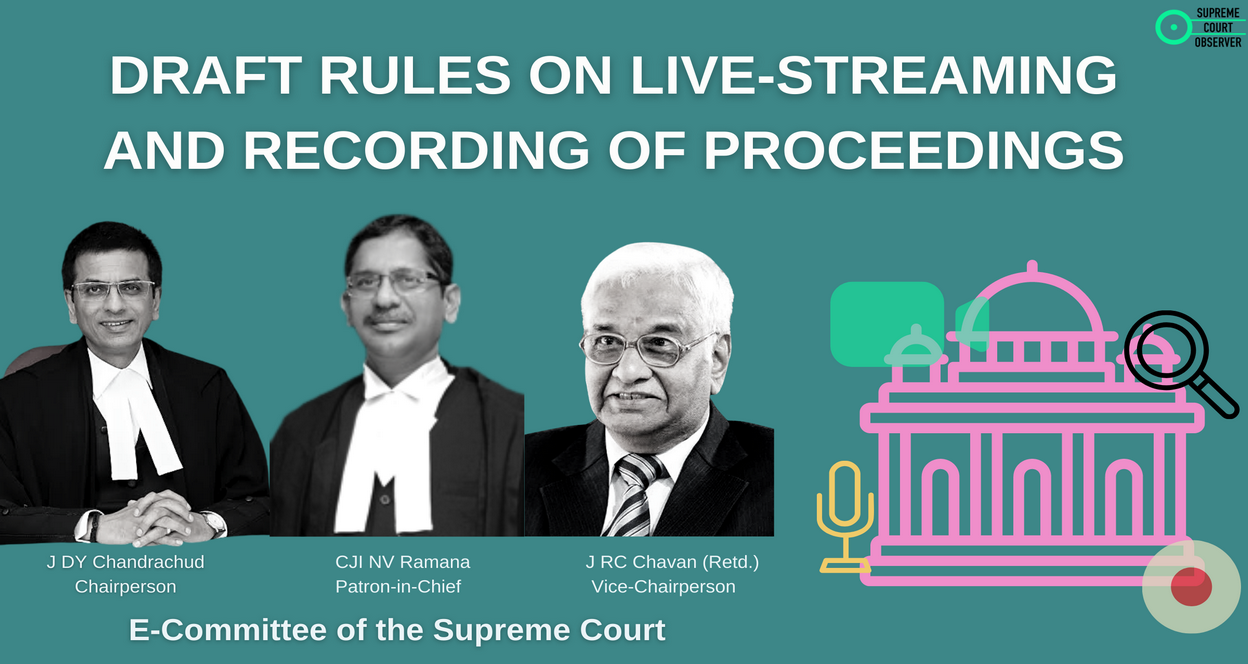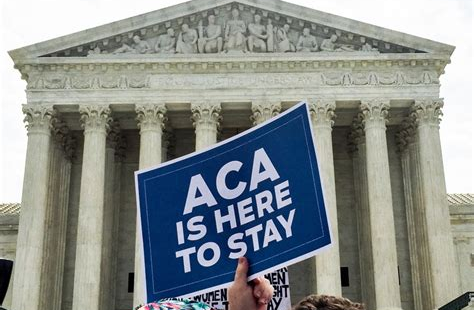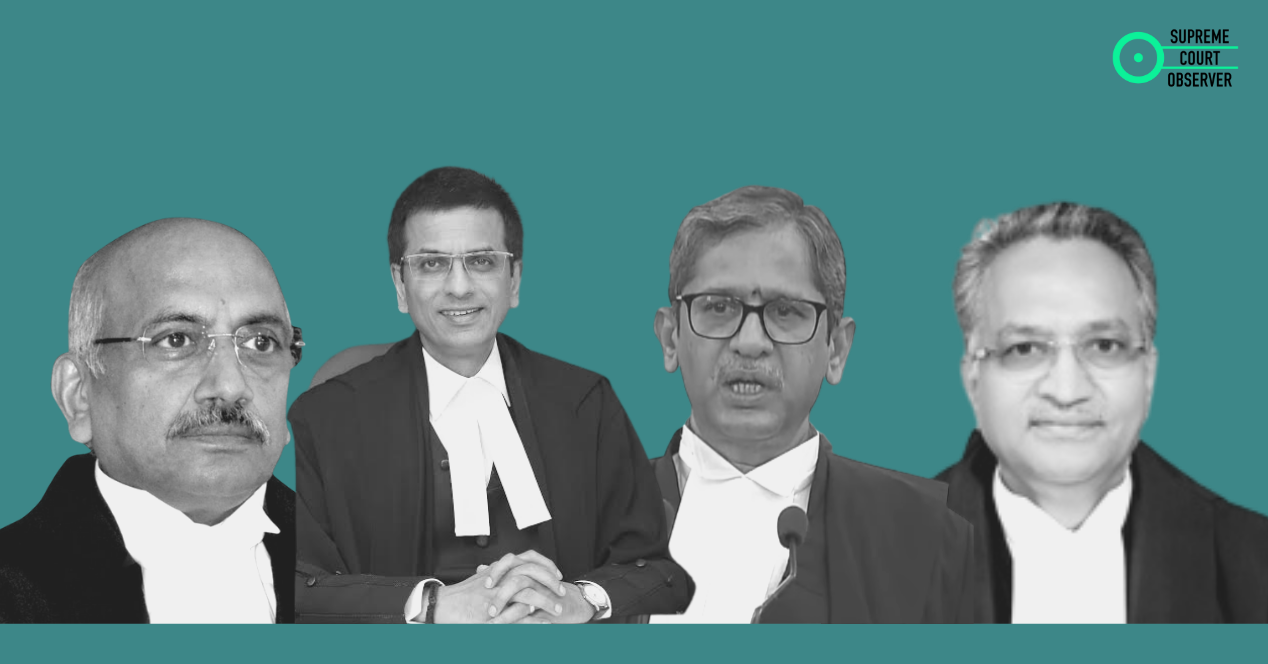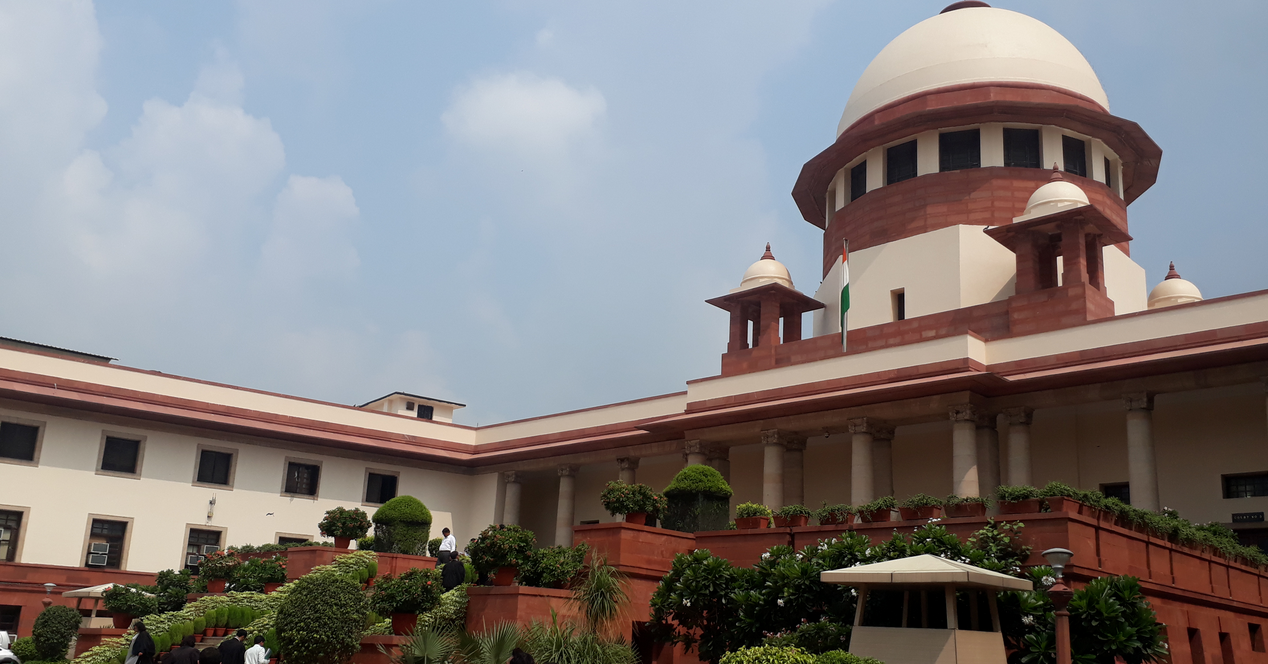Analysis
Getting Digital Access to the Supreme Court
The Supreme Court live streamed Court proceedings for the first time in its history today.

The Ceremonial Bench which sits in Courtroom 1 every time a Judge retires, was live streamed on the eve of CJI N.V. Ramana’s retirement (August 26th 2022). CJI Ramana and Justice Kohli delivered Orders in the first half hour of the one hour livestream. In the second half, many lawyers came forward to bid emotional and teary goodbyes to the Chief Justice well. The outpour of praises and good wishes was for all to see.
In Swapnil Tripathi v Union of India (2018) a three-judge bench led by CJI Dipak Misra held that the Court should live telecast proceedings in cases of public importance. In the same year, Senior Advocate Indira Jaising filed a Public Interest Litigation in the Supreme Court asking the Supreme Court to draft rules on live telecast of its proceedings, as per its previous decision in Swapnil. She argued that many Courts across the world had successfully adopted livestreaming as a way of creating transparency and accountability of the Court. However, no concrete guidelines were seen till 2021.
Virtual Courts: The First Step to Digital Access
The push for digital or virtual access to Court proceedings peaked during the COVID-19 pandemic, when physical hearings were stopped. The first step towards digital access was in March 2020, when the Court allowed the lawyers to make their submissions through the video conferencing. However, a virtual court was only accessible in the SC Conference room within Court premises. These rules were relaxed in April that year, and lawyers were allowed to opt for virtual hearings, and access them from their own device. Out of necessity, the Court set up virtual hearings on ‘Vidyo’, an United States based video communication and conferencing software.
Arguments made in Virtual Courts, however, remained out of the public’s access. Only arguing counsels were given links to the hearings, and broadcasting of the stream was ‘expressibly prohibited’. Media access to court proceedings was given gradually and in limited numbers. For instance, in March 2020, 3 journalists were allowed in the SC Conference Room.
On May 13th 2021, Chief Justice N.V. Ramana launched an app to provide the media access to Supreme Court video links. CJI Ramana noted the struggle faced by journalists, who had to rely on advocates for video links to attend proceedings safely from their home. This marked the Supreme Court’s deliberate move towards providing digital access to the Court.
Live Streaming of High Court Hearings Begin
On June 7th 2021, the E-Committee of the Supreme Court announced Draft Rules on Live-Streaming and Recording of Court Proceedings for High Courts. After receiving inputs and suggestions for the draft, the Supreme Court would begin to allow High Courts to live stream proceedings. Before the Rules were formed, Gujarat was the first High Court to livestream proceedings on Youtube in October 2020. On July 17th 2021, the Gujarat HC formally launched its Youtube channel where it would live stream hearings. The Karnataka, Madhya Pradesh, Orissa and Patna High Courts followed suit.
The popularity of live streaming of Court hearings was unmissable during the Hijab ban hearings before the Karnataka High Court. Every day, at least two hundred thousand citizens tuned in to the Court’s live stream, actively tracking the proceedings. Critics expressed concerns that participants in a proceeding—parties, lawyers and Judges—would be affected by the knowledge that they had a very public, and engaged audience. In 2021, CJI N.V. Ramana commented that public access might be a ‘double-edged sword’, and cautioned Judges against being swayed by public opinions. The path towards introducing live streaming to the Supreme Court, therefore, was taken cautiously, and with much deliberation.
The Notice today came unexpectedly, as the Court began to bid goodbye to its Chief Justice of over 18 months. CJI Ramana, Justice U.U Lalit and Justice Kohli sat on the Bench as the CJI ‘ceremoniously’ ended his tenure. Is this a one-time live streaming effort? Or will the Supreme Court now begin live streaming cases, even if it is just the Chief’s Court?




